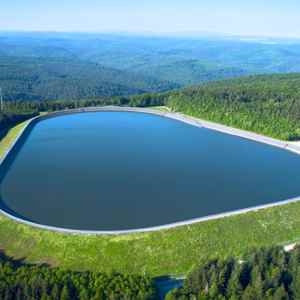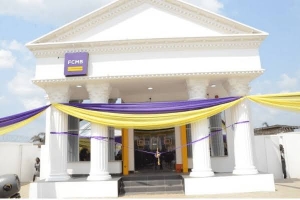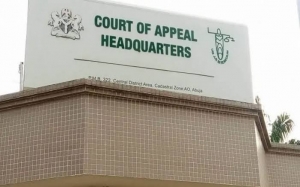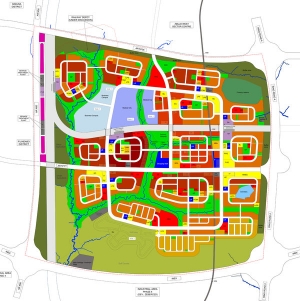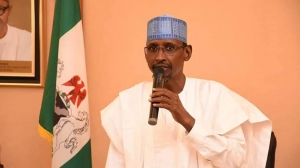RediProjects admin
Forget batteries. This 100-year old technique provides cheap energy storage for wind and solar power
Pumped hydro is a solution in plain sight. And the U.S. is brimming with potential.
To cut U.S. greenhouse gas emissions in half within a decade, the Biden administration’s goal, the U.S. is going to need a lot more solar and wind power generation, and lots of cheap energy storage.
Wind and solar power vary over the course of a day, so energy storage is essential to provide a continuous flow of electricity. But today’s batteries are typically quite small and store enough energy for only a few hours of electricity. To rely more on wind and solar power, the U.S. will need more overnight and longer-term storage as well.
While battery innovations get a lot of attention, there’s a simple, proven long-term storage technique that’s been used in the U.S. since the 1920s.
It’s called pumped hydro energy storage. It involves pumping water uphill from one reservoir to another at a higher elevation for storage, then, when power is needed, releasing the water to flow downhill through turbines, generating electricity on its way to the lower reservoir.
Pumped hydro storage is often overlooked in the U.S. because of concern about hydropower’s impact on rivers. But what many people don’t realize is that most of the best hydro storage sites aren’t on rivers at all.
We created a world atlas of potential sites for closed-looped pumped hydro – systems that don’t include a river – and found 35,000 paired sites in the U.S. with good potential. While many of these sites, which we located by satellite, are in rugged terrain and may be unsuitable for geological, hydrological, economic, environmental or social reasons, we estimate that only a few hundred sites are needed to support a 100% renewable U.S. electricity system.
WHY WIND AND SOLAR NEED LONG-TERM STORAGE
To function properly, power grids must be able to match the incoming electricity supply to electricity demand in real time or they risk shortages or overloads.
There are several techniques that grid managers can use to keep that balance with variable sources like wind and solar. These include sharing power across large regions via interstate high-voltage transmission lines, managing demand – and using energy storage.
Batteries deployed in homes, power stations and electric vehicles are preferred for energy storage times up to a few hours. They’re adept at managing the rise of solar power midday when the sun is overhead and releasing it when power demand peaks in the evenings.
Pumped hydro, on the other hand, allows for larger and longer storage than batteries, and that is essential in a wind- and solar-dominated electricity system. It is also cheaper for overnight and longer-term storage.
OFF-RIVER PUMPED HYDRO ENERGY STORAGE
In 2021, the U.S. had 43 operating pumped hydro plants with a total generating capacity of about 22 gigawatts and an energy storage capacity of 553 gigawatt-hours. They make up 93% of utility-scale storage in the country. Globally, pumped hydro’s share of energy storage is even higher – about 99% of energy storage volume.
Pump hydro projects can be controversial, particularly when they involve dams on rivers that flood land to create new reservoirs and can affect ecosystems.
Creating closed-loop systems that use pairs of existing lakes or reservoirs instead of rivers would avoid the need for new dams. A project planned in Bell County, Kentucky, for example, uses an old coal strip mine. Little additional land is needed except for transmission lines.
An off-river pumped hydro system comprises a pair of reservoirs spaced several miles apart with an altitude difference of 200-800 meters (about 650-2,600 feet) and connected with pipes or tunnels. The reservoirs can be new or use old mining sites or existing lakes or reservoirs.
On sunny or windy days, water is pumped to the upper reservoir. At night, the water flows back down through the turbines to recover the stored energy.
A pair of 250-acre reservoirs with an altitude difference of 600 meters (1,969 feet) and 20-meter depth (65 feet) can store 24 gigawatt-hours of energy, meaning the system could supply 1 gigawatt of power for 24 hours, enough for a city of a million people.
The water can cycle between upper and lower reservoirs for a hundred years or more. Evaporation suppressors – small objects floating on the water to trap humid air – can help reduce water evaporation. In all, the amount of water needed to support a 100% renewable electricity system is about 3 liters per person per day, equivalent to 20 seconds of a morning shower. This is one-tenth of the water evaporated per person per day in the cooling systems of U.S. fossil fuel power stations.
STORAGE TO SUPPORT 100% RENEWABLES
Little pumped storage has been built in the U.S. in recent years because there hasn’t been much need, but that’s changing.
In 2020, about three-quarters of all new power capacity built was either solar photovoltaics or wind power. Their costs have been falling, making them cheaper to build in many areas than fossil fuels.
Australia is installing solar and wind three times faster per capita than the U.S. and is already facing the need for mass storage. It has two systems under constructionthat are designed to have more energy storage than all the utility batteries in the world put together; another dozen are under serious consideration. None involve new dams on rivers. The annual operating cost is low, and the working fluid is water rather than battery chemicals.
Shifting electricity to renewable energy and then electrifying vehicles and heating can eliminate most human-caused greenhouse gas emissions. The U.S. has vast potential for off-river pumped hydro storage to help this happen, and it will need it as wind and solar power expand.
Andrew Blakers is a Professor of Engineering at Australian National University; Bin Lu is a Research Fellow at Australian National University, and Matthew Stocks is a Research Fellow at ANU College of Engineering and Computer Science, Australian National University. This article is republished from The Conversation under a Creative Commons license. Read the original article.
Small-scale, domestic solar solutions are helping to electrify Nigeria
In all fairness and with the best of intentions, the national electricity grid in Nigeria is far from perfect. In fact, it is as far from perfect as a national electricity grid can be. The populous nation of over 200 million has merely 25 industrial-grade power plants across the country, many of which are not fully functional. These plants provide a nominal capacity of 5,000MW, while the minimum required capacity to meet the needs of the nation is 40,000MW.
Nigerians have resorted to all sorts of quick fixes to make up for this power deficit. Whenever the electricity grid fails—as it often does—one can hear hundreds, if not thousands, of diesel generators coming to life with a roar in each neighborhood or village. Although these noisy generators restore the light and all the convinces that come with electricity, they are highly pollutant.
It is estimated that small diesel generators owned by Nigerian families and businesses have a combined capacity of 15,000MW—three times the capacity of the national grid. Given that many of these generators are aging and poorly maintained, it is hardly any surprise that they release a huge array of pollutants into the air, to say nothing of the nerve-racking noise they make. However, there may soon be an affordable solution available that can put an end to this fiasco. If Nigerian families and businesses are to generate their own electricity from time to time, then why shouldn't they tap into the clean, quiet, and freely accessible solar energy, especially given the high level of sunlight that almost all parts of Nigeria receive?
Over the last years, the price of photovoltaic (PV) panels has fallen significantly, while their efficiency has improved. Meanwhile, battery systems to save the electricity generated during the sunnier hours for the dark hours of the night have also improved and become more affordable.
Many companies now offer complete home photovoltaic solutions in Nigeria and other parts of Africa that come complete with PV panels, batteries, DC to AC converters, and the required cabling that can completely meet the electricity needs of a Nigerian home or business. What is more exciting is that these solutions can now compete with old-fashioned diesel generators not only in terms of generation capacity but also installation costs.
A study by Babajide and Brito, published in the journal Renew-able Energy, found that PV solutions can soon replace diesel generators in Nigeria, and the financing of their installation can—in the long run—be partly based on savings in fuel prices. After all, diesel is not a cheap commodity in Nigeria, while sunlight is completely free. The researchers also pointed out that “effective government policy is key to the adoption and diffusion of solar PV.”
And, indeed, both the government and NGOs are taking a keen interest in the matter. In 2020, and despite the calamities of Covid-19, a USD75-million fund was launched to help electrify Nigeria using domestic PV systems. Netherlands-based PV panel manufacturer, Lumos, is determined to light up 1 million Nigerian households over the next five years. This is good news for over half of all Nigerian households that have no access to the national grid, especially as other foreign and domestic companies follow the lead of Lumos. The company's business model is interesting, and it suits many underprivileged citizens who may not have particularly deep pockets. The company installs the PV panels on the roofs of Nigerian homes and businesses, but it does not bill the buyers upfront or even after the installation. The users have to pay a reasonable daily fee to the company only for the amount of electricity generated on that particular day.
Other business models used by PV manufacturers may transfer the ownership of the photovoltaic solutions to the Nigerian users once the installer has been reimbursed fully in small monthly installments. This will let Nigerian households to practically use free electricity for a long time after settling their accounts with the PV installing companies over an extended period—which is nothing short of a revolutionary convenience for many underprivileged Nigerians.
As sunlight is an endless, plentiful resource in Nigeria, reasonably priced plans for the installation of domestic PV solutions can help electrify Africa's largest economy and raise the efficiency and profitability of Nigerian businesses, ultimately helping Nigeria to become an even more prosperous economy. The fact that technology is giving us better and cheaper photovoltaic panels, batteries, and DC to AC converters with every passing day is just another bonus.
FCMB partners Ogun State on provision of affordable loans for home ownership
Residents of Ogun State who desire to own homes now have an opportunity to do so, courtesy of FCMB Group Plc. This is because the leading financial powerhouse has partnered with the Ogun State Government to provide affordable mortgage loans to subscribers of low-cost schemes. First City Monument Bank (FCMB), the retail and commercial banking subsidiary of the Group, will disburse the loans.
This was disclosed during a working visit by the Management of FCMB Group, led by Ladi Balogun, the Group Chief Executive, to the Governor of Ogun State, Dapo Abiodun, in Abeokuta.
Speaking during the visit, Balogun reiterated the commitment of FCMB Group and its subsidiaries to supporting initiatives that would ensure sustainable development and welfare of people, businesses and government.
According to him: “We are ready to support the state government’s development agenda to ensure improved quality of life for the people by helping them to own homes. FCMB will always be there to fulfil its promise of helping customers achieve their aspirations.”
While appreciating the State’s infrastructure developmental strides, Balogun assured that FCMB would collaborate with Ogun State to improve the quality of life of her people and businesses.
Responding, Governor Abiodun called for a more robust relationship between the State and the FCMB Group. He affirmed his administration’s commitment to elevating the quality of life of the good people of Ogun State.
He stated that: “In the last 30 months, we built over 1,000 homes with more required to help the State fulfil its housing goals. People are buying them faster than we are building them. They are either paid in full or paid in part, and those are areas that you could work with us. Ogun State Government is for progressive public-private partnership in the areas of financing, management and concession.”
The Governor equally encouraged FCMB to adopt a Primary Health Centre for rehabilitation and provision of equipment as well as a school through the adopt-a-school programme put in place by his administration.
FCMB Group Plc is one of Nigeria’s leading and most diversified financial holding companies with subsidiaries that are market leaders in their respective segments. The institution has built a strong base in various sectors of the nation’s economy by consistently offering cutting-edge solutions to its customers across segments.
Thisday January 10, 2022
Appeal court bars draughtsmen from preparing, submitting architectural designs
Eight years after the legal battle involving Nigerian Association of draughtsmen, Architects Registration Council of Nigeria (ARCON) and Ogun State Government, the Court of Appeal, Ibadan Judicial Division has finally laid the matter to rest.
Consequently, the court barred draughtsmen from undertaking any job that deals with submitting, preparing, signing and counter-signing any type of building plan in the country.
Justice Folasade Ojo, who read the lead judgment in an appeal brought by the Nigerian Association of draughtsmen against ARCON and Ogun State Government, described the appellant as an association of businessmen and women, hence no law permits them to draw architectural plans.
With this verdict, their lordships including Ojo, Abba Mohammed and Abdul-Azeez Waziri upheld a lower court’s verdict, which had agreed with the architects’ council.
The draughtsmen had rejected Ogun State High Court’s verdict and approached the Court of Appeal, Ibadan, under the aegis of Nigerian Association of Draughtsmen approached with a goal to upturn the decision.
They contended that, said the trial court was wrong to uphold the Ogun State Urban and Regional Planning Law 2005, which had restrained its members from preparing, signing, countersigning and submitting for approval, any type of building plan.
Specifically, the case of the appellant at the lower court was that consequent upon the then Attorney General of the Federation and Minister of Justice, Prince Bola Ajibola’s authourisation and consent, the appellant took immediate steps and was registered as Nigerian Association of Draughtsmen to practice its profession as draughtsmen and with a certificate of Incorporation in 1989, which according to them empowered them to prepare, submit and counter sign any type of building without hindrance from any quarters.
But, 19 years before their registration, ARCON, the seventh respondent, had published a public notice wherein it restrained members of the draughtsmen from preparing, submitting and counter signing any building plan save for domestic building within the then Western State.
That notice led to a suit between Nigerian Union of Registered Draughtsmen against Ogun State and ARCON as respondents.
Judgments in that suit were in favour of the draughtsmen, as the court declared the public notice by ARCON illegal and ultra vires. That decision was not appealed.
But in 1990, 16 years later, the same issue resurfaced in another suit. The matter, however, was settled by parties via a consent judgment. Still, nobody appealed the consent judgment.
Following their relief from the court, the draughtsmen continued their business until June 4, 2012 when ARCON relying on the Architects Registration Act Cap A 19 LFN, 2004, wrote a letter to Ogun State Government and its agencies and requested them to stop collecting building plans from the draughtsmen.
Unsatisfied with the directive, the draughtsmen in 2013 filed another suit before Ogun State High Court. In the suit, it contended that, it had a subsisting consent judgment in its favour, hence, no organisation could hinder its members from undertaking any job of designing and submitting architectural designs to the ministry for approval.
The group contended that, the trial court was wrong was wrong to have set aside the consent judgment on the ground that it was made per incuriam (gotten wrongfully).
While the appellant maintained that it got an unchallenged judicial verdict in its favour, ARCON argued that, the appellant could rest on a consent judgment that was delivered ignorantly by the lower judge.
The architects’ council said the trial judge while upholding the consent judgment failed to take into consideration provisions of the Architects (Registration Etc) Act, which has effectively and bindingly regulated the subject matter that bothers on architectural design and presentation of such designs for approval.
In their verdict, the Appellate Court, which noted that Architects (Registration, etc) Act was amended before the consent judgment, said the court that entered the consent judgment had a duty to take into consideration ARCON’s Act before adopting the terms of settlement as its judgment, but it failed to do so.
Their lordships added: “Definitely, if the lower court had considered the Act, it would not have adopted the terms of settlement as its judgment. “With all the above in mind, I agree in toto with the lower court that the consent judgment was entered per incuriam. The parties in the case in which the consent judgment was given did not disclose a material fact.
“There is therefore a ground for the lower court to set aside the consent judgment and I so hold. I therefore hold that the consent judgment is no longer valid and subsisting. The lower court was right when it set it aside on the ground that it was entered per incuriam,” the lordships added.
According to the court, “members of appellant, who members of the appellant who are not registered architects are not, entitled to prepare architectural plans and drawings and I so hold.”
The court also concluded that, “since the appellant is not regulated by any statute and is not contemplated within the Exclusive Legislation competence of the National Assembly by virtue of item 49 in the Exclusive Legislative List, the inevitable conclusion is that its members are not competent or qualified to prepare, submit, sign or counter sign any type of building plan and I so hold.”
The Guardian, December 27, 2021
Master Plan Gwagwa District ‘Abuja Midtown’
In 2008, AS+P completed its Structure Plan for the development of Abuja North Phase IV integrating the urban structure as an extension into the valid Abuja Master Plan from the 1970s and unifying modern city and mobility planning with the typical Nigerian trends. In 2013, Metro Capital Advisory Group engaged the services of AS+P and Julius Berger (JBI/JBN) to design one urban segment of the 10,000-ha size planning area in detail, "Abuja Midtown". Also known as Gwagwa District, it is an 840-ha city within a city that would become home to 71,000 inhabitants.
The Clarification Study was approved by Abuja's planning authority FCDA in early 2014. Based on the master sketch defined in the Clarification Study, AS+P prepared an overall Land Use Plan, and subsequently proposed a detailed Site Development Plan as well as a Legal Plan of Phase One. The infrastructure planning – JBI/JBN´s scope – was developed in close coordination with the planning team. Abuja Midtown´s distinct master plan features such special land uses as an ultramodern medical city, a business campus, 5-star hotels, a convention center, an 18-hole golf course and resort with polo fields and facilities including golf residential estate, a luxury shopping mall, a fashion boulevard, residential and mixed-use developments, and an interconnected system of public green areas. Abuja Midtown will further feature a district tramline, intelligent street lighting and traffic controls, full CCTV security, and an independent power plant. These projects are collectively expected to act as critical economic and social anchors for the district and the surrounding areas. The implementation of the land use plan will showcase Abuja Midtown as the future of integrated green urban living in Abuja.
Land swap programme will save FG N1trn – FCT minister
Minister of Federal Capital Territory (FCT), Muhammad Bello, says the Land Swap Programme will save the Federal Government nearly N1 trillion.
Federal Executive Council (FEC) on June 16 approved the resumption of the Federal Capital Development Authority (FCDA) land swap initiative, started by the administration of former President Goodluck Jonathan.
FEC, rising from a meeting in Abuja, approved the resuscitation of the programme aimed at ensuring massive infrastructural development in the FCT.
Bello made the disclosure while performing the ceremonial site hand-over of the Gwagwa District Development to Messrs Gwagwa Concession Ltd.
This was contained in a statement issued by Anthony Ogunleye, the chief press secretary to the minister.
”The Land Swap programme is expected to save the FCT administration nearly N1 trillion, which the administration would have required to procure comprehensive district infrastructure in the 13 districts earmarked under the programme,” he said.
The minister explained that his administration adopted the land swap programme when it became obvious that it could not develop the FCT using its annual budgetary allocation.
”Developing the city using the annual budgetary allocation is simply not possible because of the way the city has grown astronomically in terms of physical expansion and a rising population.
”The programme in its most basic form is to grant an agreed percentage of land to an investor for comprehensive development.
“In exchange for this grant, the investor is to provide both specified infrastructure as well as resettlement costs,” he said.
He also said the programme was a 10-year comprehensive plan with four years meant for the provision of infrastructure.
“Its primary objective, in its simplest form, includes the encouragement of home ownership and the reduction of housing deficit in the FCT.
”The provision of infrastructure in designated districts as well as finding a lasting solution to the resettlement and compensation challenges of the FCT administration.
”The programme will be driven 100 per cent by the private sector and is to be carried out in strict compliance with the provisions of the Abuja Masterplan.
“And in accordance with the technical specifications and standards established by the FCDA,” he said.
Mr Bello expressed satisfaction that Julius Berger Nig. Plc., was involved as technical partners to Gwagwa Concession.
”I am particularly happy that this particular one is being done in partnership with Julius Berger Plc. because there is no way you can write the history of Abuja without mentioning this company.
”As you know the company is 100 per cent Nigerian and we are very proud to be associated with them in this city,” he added.
The minister disclosed that the ceremony was one in a series of initiatives that would be flagged off before the end of the administration.
“After this, we have others that we intend to do and each company is expected to meet all the strict criteria established with this initiative.
“This criteria is basically hinged on three factors: one, to protect the investors; secondly, to protect the off-takers who are going to be the ultimate beneficiaries, and thirdly, protect the government and the environment,” he explained.
Bello thanked President Muhammadu Buhari for his support to the programme, disclosing that the President’s directive was that the project should be carried out with the highest standards that the FCT was known for.
On her part, FCT Minister for State, Ramatu Aliyu, said the event was a testament to the commitment of the administration to the provision of critical infrastructure for FCT residents in line with the Presidential mandates for the administration.
According to Mrs Aliyu, it is also a bold step by the FCT administration towards resolving the burdensome challenge of infrastructure funding through budgetary allocations.
Managing Director of Gwagwa Concessions, Farouk Saleh, while presenting a symbolic key of the District to the FCT minister, promised that his company would deliver on the provisions of the contract for the development of Gwagwa District.
NAN, December 15, 2021

